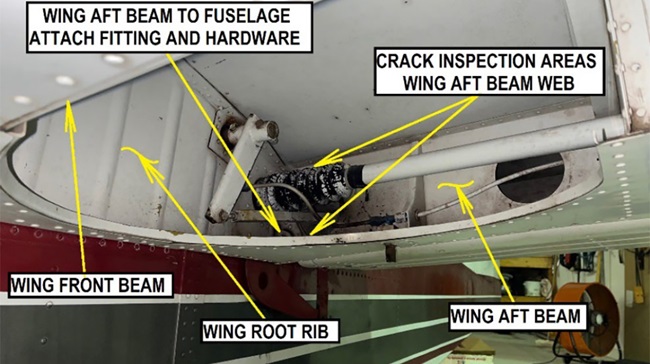President's Position
ADS-B
AOPA President Phil Boyer flies an ADS-B-equipped Cessna 172.
Most of us who own aircraft enjoy selecting the equipment for a new airplane or, with used aircraft, working from a "dream list" of what we would like to install when our finances allow. A great financial fear for owners is the constant stream of airworthiness directives (ADs) that can be imposed on new or old aircraft.
But it's been more than two decades since owners of light general aviation aircraft have experienced the government mandating a specific piece of equipment to allow continued operation in the nation's airspace. Credit your association for looking out for owner interests and thoroughly researching the validity of all ADs, challenging those that can only be attributed to unique operations of the aircraft and ensuring that those that do involve the safety of flight over the model or fleet are well researched and necessary. AOPA has worked diligently to avert proposals for new communications radios; delayed the mandate to replace the 121.5-MHz emergency locator transmitter in all our airplanes; avoided a requirement for Mode S transponders; and helped stop many more expensive proposals.
I remember the last true mandate for equipage, in the 1980s. Congress mandated the Mode C transponder for access to certain classes of airspace after a tragic midair in the Los Angeles area. Without mandates, however, in the past 15 to 20 years GA pilots have voluntarily moved into the twenty-first century. Many of us have added capability to our airplanes with GPS, either panel mount or handheld; lightning-detection devices; and, most recently, weather datalink.
A mandate for equipage is on the horizon — and the potential benefits are tangible — with a technology called ADS-B (automatic dependent surveillance-broadcast). You've read that phrase in many of my past columns, since AOPA has been at the forefront of this technology for a full decade (see " ADS-B: The Future Is Now," November 2005 Pilot). ADS-B has been tested and refined in Alaska, in the "Capstone Program."
What is ADS-B and why is it needed? There are three categories of equipment in airplanes that allow for today's air traffic control system to function: communications, navigation, and surveillance (CNS) boxes. The transponder is classified as a surveillance device, and is based on pretty archaic technology. You've seen the rather large and damage-prone radar antennas on ground towers that send a line-of-sight signal to the airplanes in flight. Our transponders receive that signal and then return it to the same antenna. Computers process the response into a radar blip on the air traffic controller's screen. With most airplanes today equipped with GPS, and a highly accurate 3-D position from the satellites, what about the airplane telling ground stations its precise location and altitude and at the same time identifying itself to other aircraft in flight? Eliminate the rotating antenna, eliminate the radar-dead spots, and gain an instant two-way datalink between ground facilities and airplanes. The one drawback is that surveillance costs would be astronomical to maintain both expensive ground-based radar and ADS-B stations. Therefore, rapid, total, systemwide equipage on the ground and by all aircraft is essential for ADS-B implementation to be successful.
In remote parts of countries such as China, and even in Australia where there has been no air traffic system, ADS-B is the hands-down first choice for starting from scratch. In the United States the FAA is working on a detailed 10-year plan to replace radar with ADS-B. This means that by the end of the next decade, if you fly IFR or VFR in certain classes of airspace you may have to purchase an ADS-B transceiver for your aircraft. The FAA is considering public meetings early this year to be held in the Washington, D.C., area to discuss an ADS-B implementation strategy. And the FAA is looking to make a key decision on implementation this July that could lay out a transition to ADS-B services within the next 10 to 15 years. In November 2005, Congress authorized $42 million in ADS-B funding and told the FAA to submit an ADS-B spending plan within 30 days. This budget means that important programs for aviation safety and infrastructure improvement will continue.
The challenge that AOPA has thrown to the FAA is this: Don't just mandate another black box that does nothing for pilots. This time the FAA is listening. To put it simply, ADS-B can bring benefits to GA in the form of traffic and weather datalink in the cockpit. That is why AOPA continues to insist that the FAA commit to providing traffic, graphical weather, and other information in the cockpit via ADS-B and a multifunction display (essentially a small computer screen) in the cockpit.
We have not lost sight of the mandate from our members that new technology be affordable. AOPA continues to insist that ADS-B be far below today's cost of $8,000 prior to a fleetwide-equipment mandate. AOPA realizes that building 200,000 units will in itself bring enough volume to lower today's cost, as will encouraging more manufacturers to compete in this field, along with possible congressional support for tax incentives. Our goal will be to bring the advantages of ADS-B to the cockpit 10 years from now at no greater cost than today's Mode C transponder — with weather and traffic displays as added bonuses.
Ten years of history, AOPA-owned aircraft equipped with ADS-B for more than half this time, and dedicated personnel and resources will ensure this coming mandate will be both beneficial and affordable for those who are the heaviest users of the airspace system.


